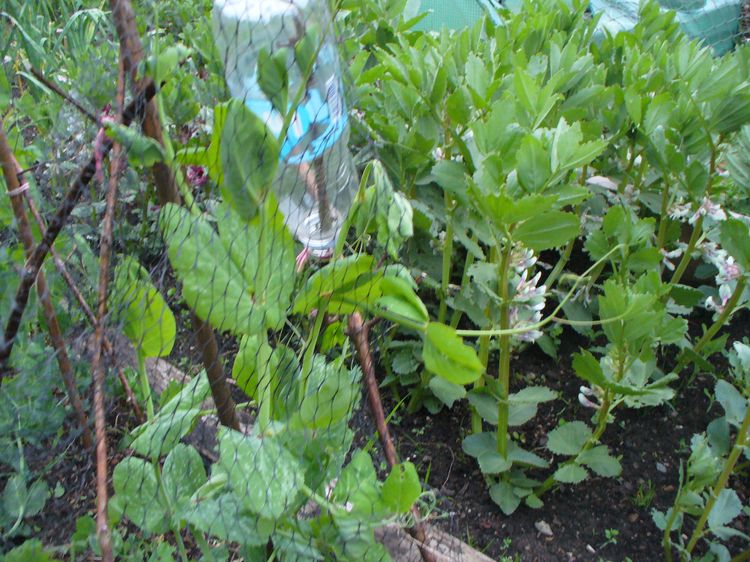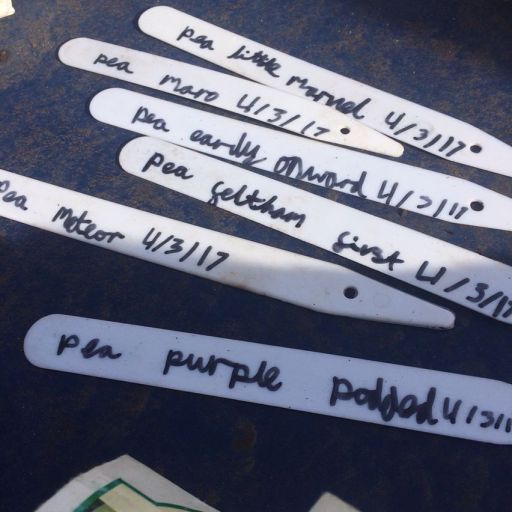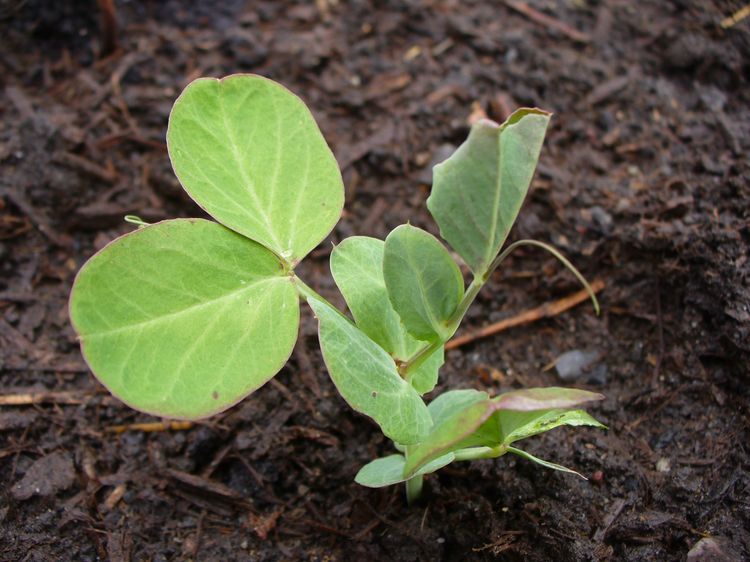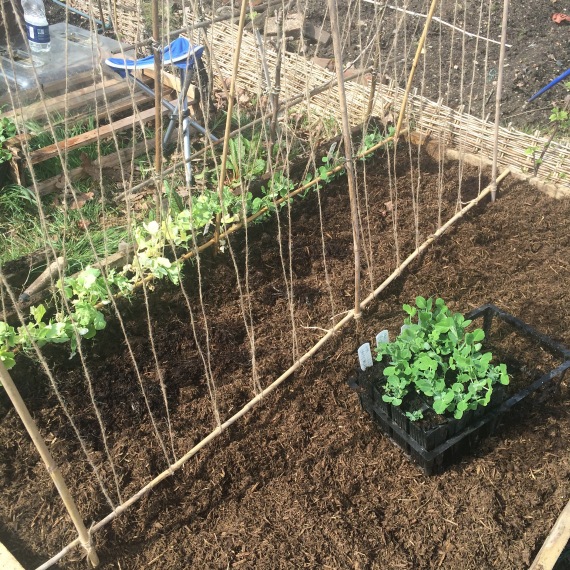There are some vegetables that are good to grow yourself because it is cheaper than buying them at the shops – like asparagus, artichokes, redcurrants and rhubarb. But there are others that don’t make much economic sense because they are so cheap, like peas and carrots. Instead, they are grown for flavour and variety, which are superior to shop-bought veg.
I grow peas every year and I never produce as many as I could buy frozen in a bag, but I love the soft lush growth in May and June, and purple pods standing out against the green. Peas taste incredibly sweet eaten straight from the pod. If you forget the fact that you’re not saving money, it is totally worth it.

As with most years, I am starting my peas off in root-trainers, which encourage the growth of strong and long roots before they are ready to be planted out. In early spring, it is also better to grow them in modules because the open ground will still be too cold for the seeds to be sown direct – like most seeds, peas need a soil temperature of at least 7C to germinate. Growing them undercover will also keep them safe from mice and squirrels.

I got my daughter interested by asking her to write the labels, and she practised her spelling – I had to tell her some of the trickier names. We sowed 12 varieties of podding pea and two each of mangetout and sugar snap. The seeds were pushed about 2cm below the surface of the compost, two seeds per module, making eight seeds of each variety per row in the root-trainer. As it still early March, I put the root-trainers in the small wooden greenhouse to keep them warm. If all seeds of the 16 varieties germinate, this will make 128 plants, which sounds like a lot but as they are mostly climbing it is easy to squeeze a lot into an allotment bed.

Here are the 16 varieties we’ve sown:
Peas for podding:
‘Feltham First’ – one of the earliest varieties, can be sown in the autumn or in February and March, produces bushy vines.
‘Meteor’ – a first early dwarf variety that can be sown in autumn as well as spring.
‘Early Onward’ – early variety, heavy cropper.
‘Little Marvel’ – early dwarf pea dating from 1900, very sweet.
‘Jaguar’ – second early variety, long pods, disease-resistant.
‘Exzellenz’ – fast-cropping within 11 weeks, long pointed pods, very sweet.
‘Purple Podded’ – can be eaten whole as mangetout or left to mature for podding, has beautiful mauve flowers before the pods develop.
‘Boogie’ – maincrop, plump peas in blunt-ended pods.
‘Alderman’ – maincrop, tall vines, heritage variety with a very sweet taste.
‘Ambassador’ – maincrop, plump pods.
‘Roi des Conserves’ – very tall climbing crop, long pods, great for preserving – its name means “King of Cans”.
‘Maro’ – the pea that can be dried and used for mushy peas.
Mangetout:
‘Golden Sweet’ – stunning in the vegetable bed, with mauve flowers followed by yellow pods, sweet taste.
‘Shiraz’ – dark purple flat pods, disease-resistant.
Sugar snap:
‘Sugar Ann’ – first early with sweet, crisp pods, the vines have a bushy, compact growth meaning they need little support.
‘Oregon Sugar Pod’ – large, curved and tender pods.

After about six to eight weeks, the peas should have grown substantial long roots and shoots, as in the picture above. The strong growth should make them more resistant to being eaten by slugs, although not totally immune, so I will use nematodes and/or organic slug pellets to keep them at bay.

Once the soil is warmer, from late March, peas can be sown direct into the soil – again, you will have to keep an eye on slugs who love the soft lush growth. I sometimes have to sow direct into the soil if some of the module-grown peas have failed to grow – for instance, if one variety is past its sow-by date and has failed to germinate.

Last year I made a pea harp, which was an A-frame bamboo structure with string woven between the top and bottom canes. This worked well, although was a bit cumbersome to put together.

Peas sown in March should be ready to harvest from late May to early June. Keep picking peas to encourage more podding. If you want to extend the season further, make successional sowings into April and May.


Great you listed the pea varieties Jane I shall copy some of them. My peas never make the kitchen it’s Tom’s favourite morning walk and snack.
LikeLike
Sounds lovely!
LikeLike
Makes me want to plant some peas!
LikeLiked by 1 person
What a lot of varieties of peas. We love peas too and can’t grow enough of them. My first lot are growing in the greenhouse in lengths of guttering
LikeLiked by 1 person